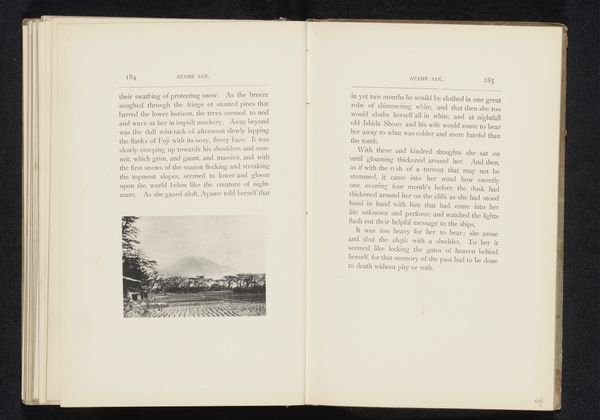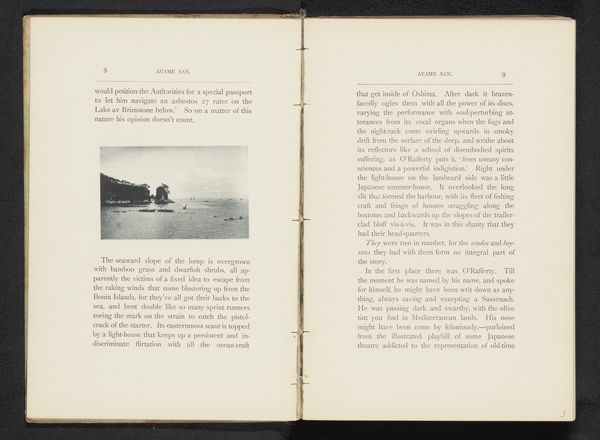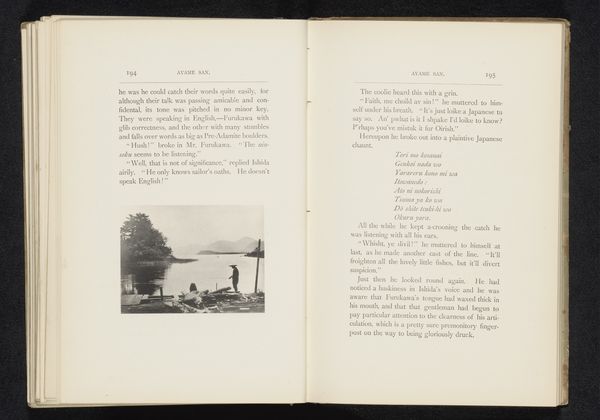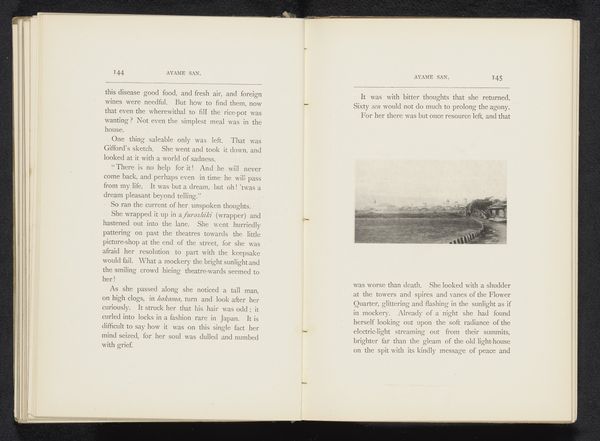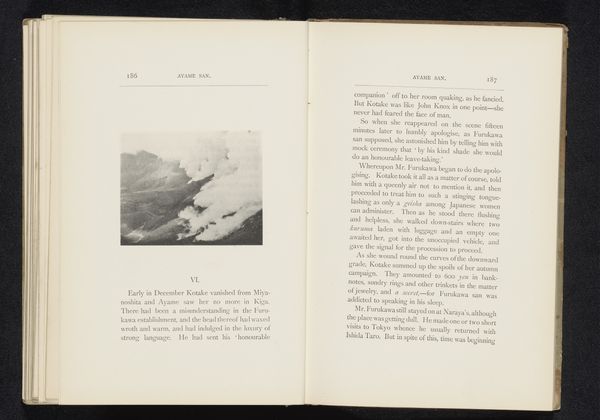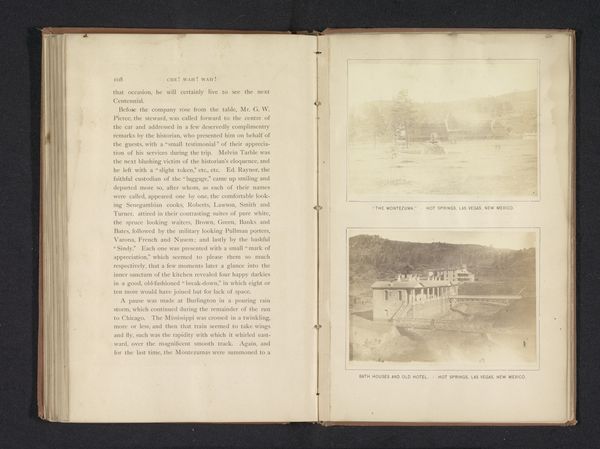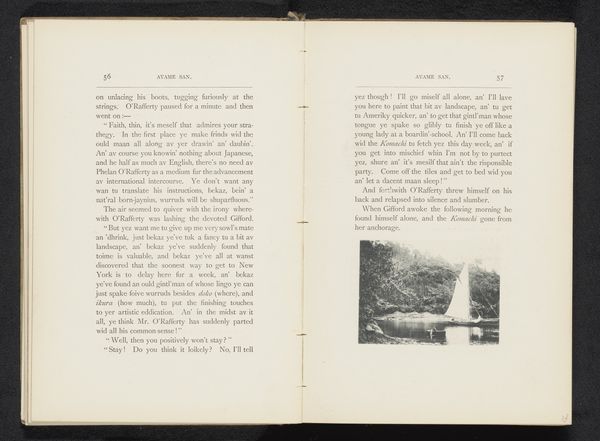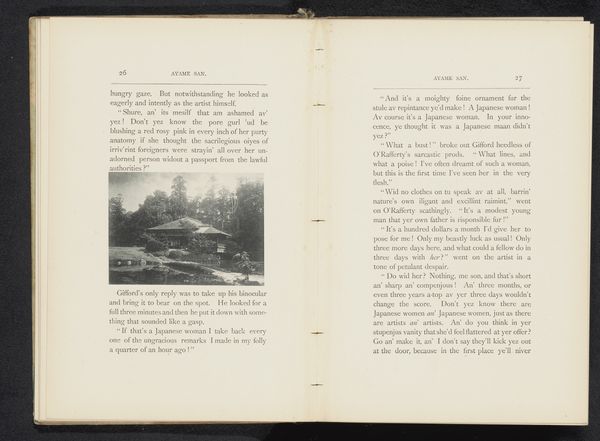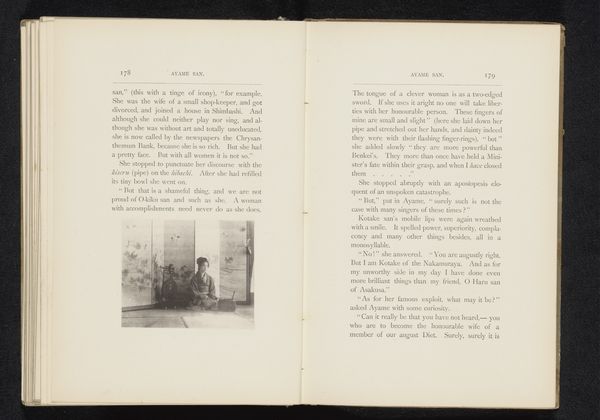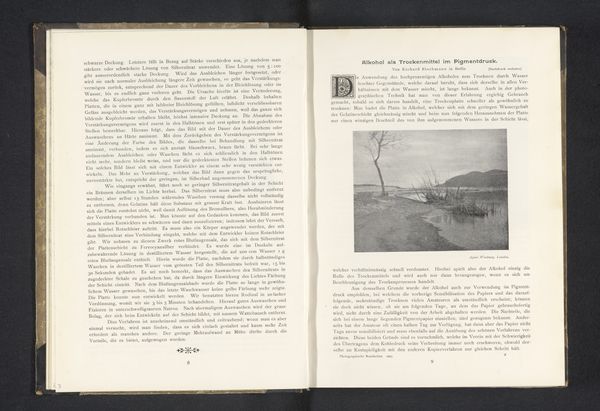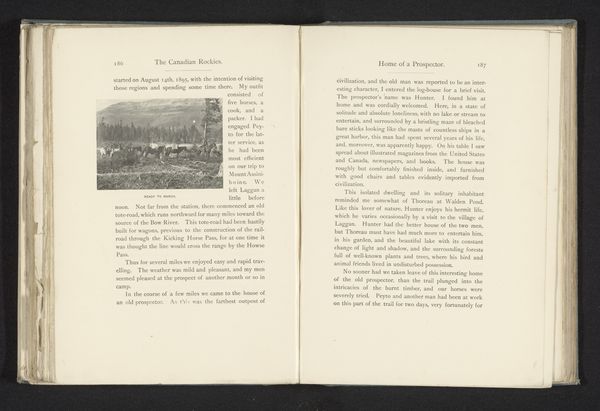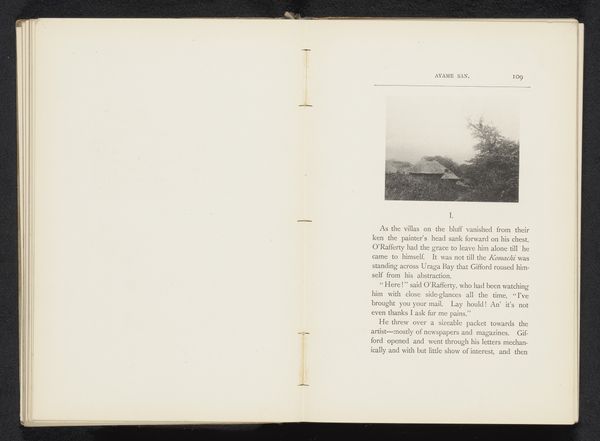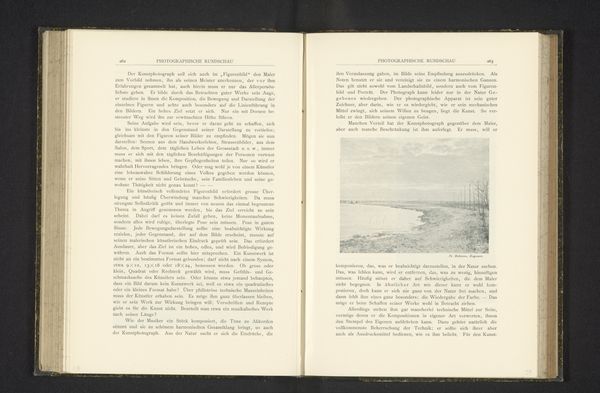
Dimensions: height 61 mm, width 87 mm
Copyright: Rijks Museum: Open Domain
This view of Mount Fuji in Japan, was made by William Kinnimond Burton in the late 19th century, and is an example of photogravure printing. This process combines photography and intaglio printmaking, and involves etching a photographic image into a metal plate, usually copper. The deep blacks and continuous tones you see here are achieved through careful control of the etching and inking process. Each print is essentially hand-pulled, requiring skill and precision. Photogravure allowed for the mass production of high-quality photographic images and for the time was a modern technique that responded to the rise of photography, and burgeoning print culture. Considering its place within a book, this work raises interesting questions about the status of the image, and its relationship to the modes of production. The labor-intensive process is a far cry from today's digital printing, yet it reflects a similar impulse: the desire to capture and share images widely. This reminds us that the meaning of an artwork is always tied to its material existence, and its place in the social and economic landscape.
Comments
No comments
Be the first to comment and join the conversation on the ultimate creative platform.
